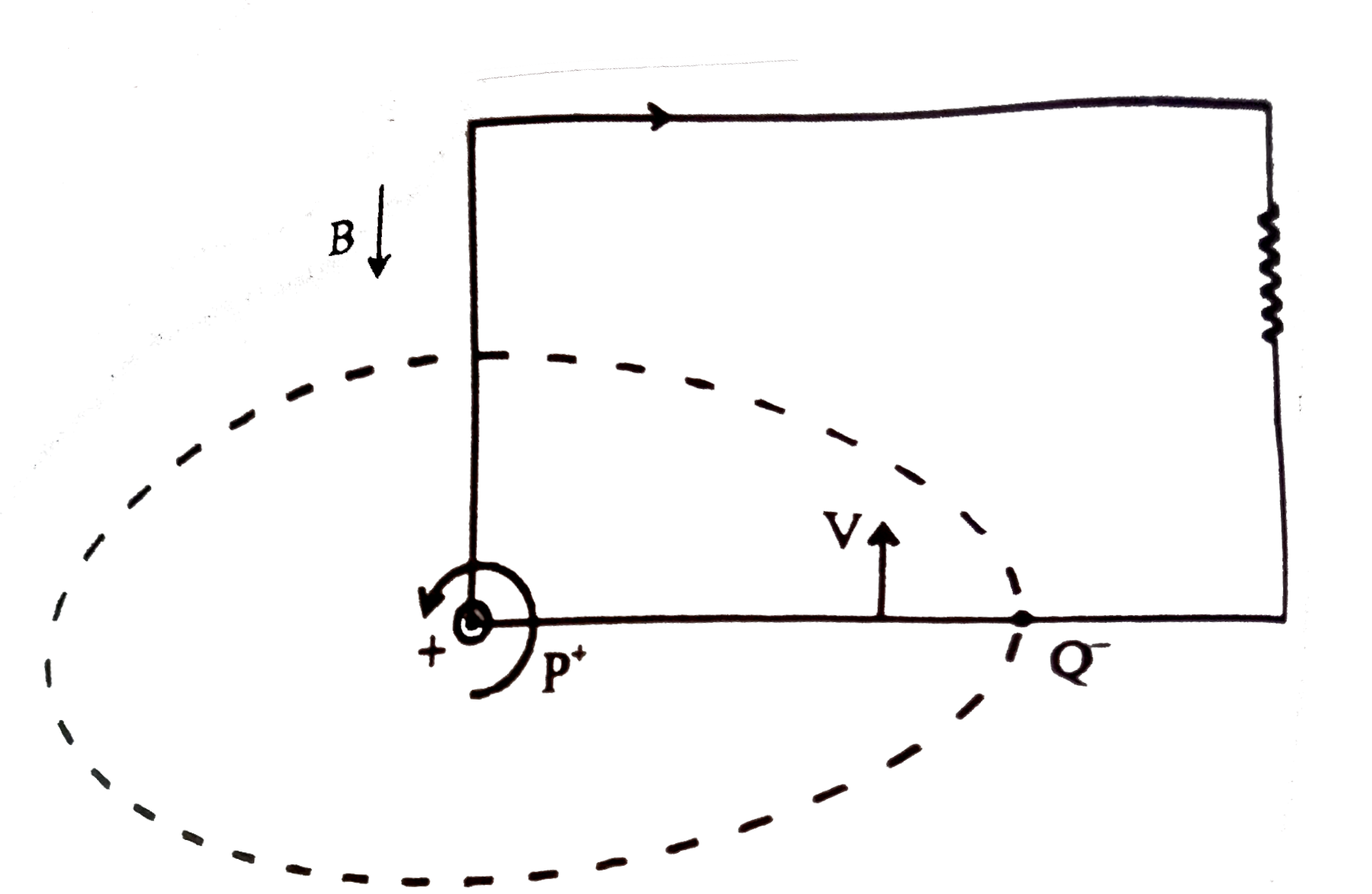A metal disc rotates freely, between the poles of a magnetic in the direction indicated. Brushes P and Q make contact with the edge of the disc and the metal axle. What current, if any, flows through R?
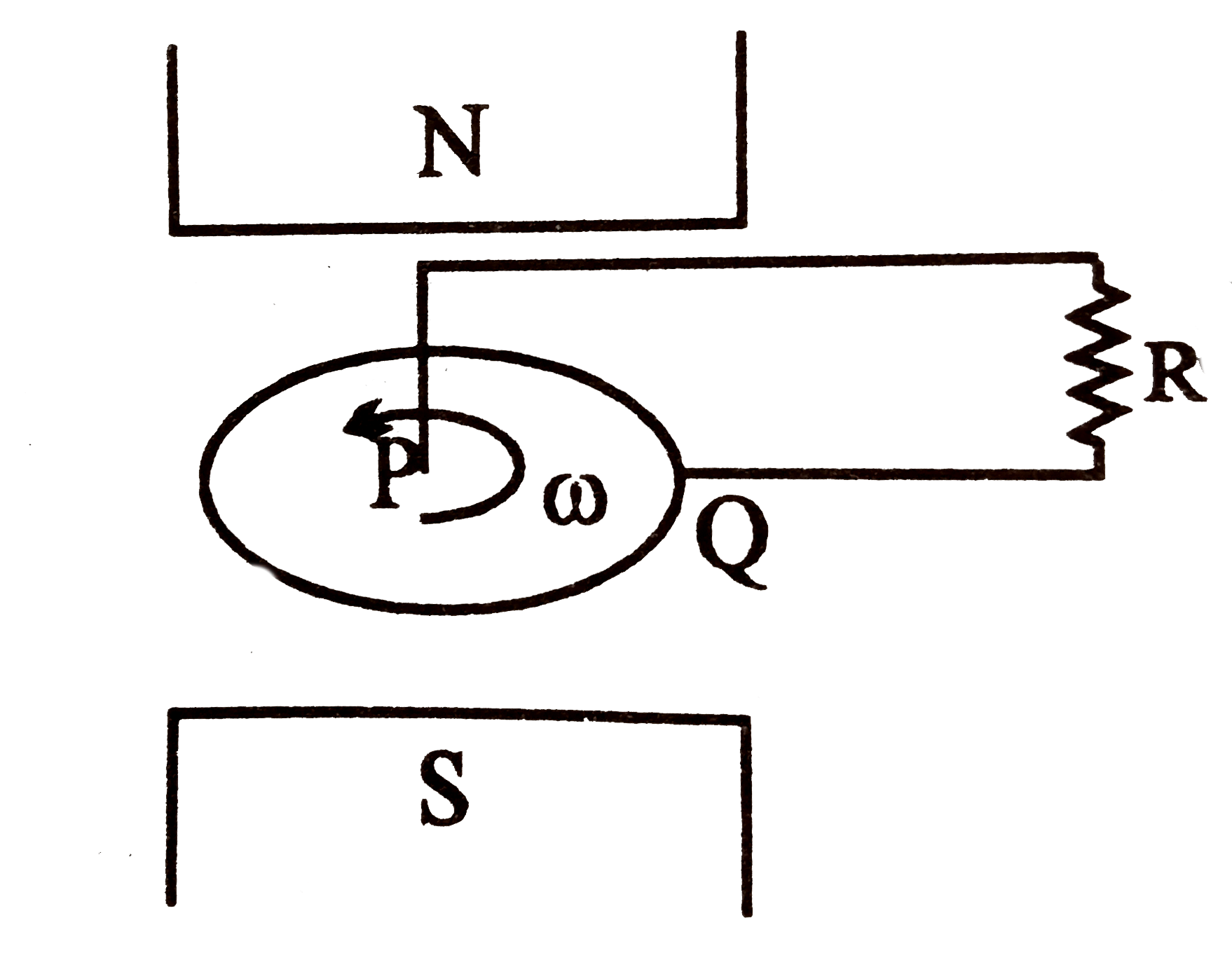
a current from P to Q
a current from Q to P
no current, because the emf in the disc is opposed by the back enf
no current, because the emf induced in one side of the disc is opposed by the emf induced in the other side.
The correct Answer is:A
Similar Questions
A man of mass m1 stands on the edge of a horizontal uniform disc of mass m2 and radius R which is capable of rotating freely about a stationary vertical axis passing through its centre . The man walks along the edge of the disc through angle θ relative to the disc and then stops . find the angle through which the disc turned the time the man stopped .
[2m1θ2m1+m2]
View SolutionA positively charged disk is rotated clockwise as shown in Fig. The direction of hte magnetic field at a point A in the plane of the disk is
View Solution
Knowledge Check
Two identical discs of same radius R are rotating about their axes in opposite directions with the same constant angular speed ω . The discs are in the same horizontal plane. At time t=0 , the points P and Q are facing each other as shown in the figure. The relative speed between the two points P and Q is vr. In one time period (T) of rotation of the discs , vr as a function of time is best represented by
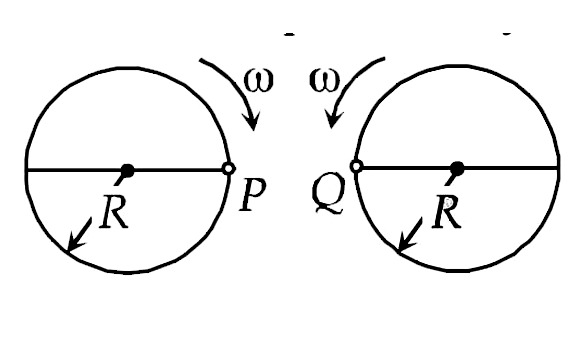 A
A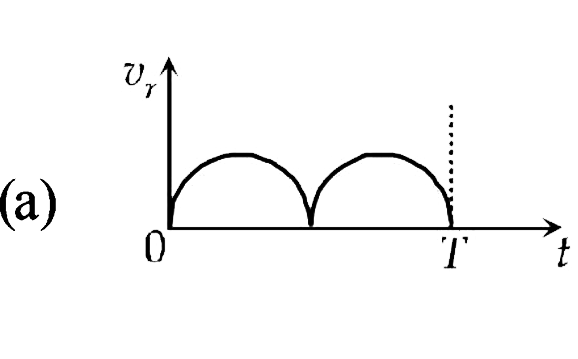 B
B C
C D
D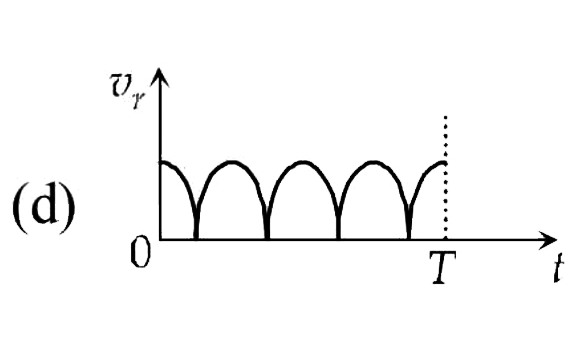
A thin metal disc of radius r floats on water surface and bends the surface downwards along the perimeter making an angle θ with vertical edge of the disc of the disc. If the disc dispplaces a weight of water W and surface tension of water is T, then the weight of metal disc is
A2πrT+WB2πrTcosθ−WC2πrTcosθ+WDW−2πrTcosθA thin metal disc of radius r floats on water surface and bends the surface downwards along the perimeter making an angle θ with vertical edge of the disc. If the disc displaces a weight of water W and surface tension of water is T, then the weight of metal disc is :
A2πrT+WB2πrTcosθ−WC2πrTcosθ+WDW−2πrTcosθ
What are the differences between the flow of electric current through metal conductors and electrolytes?
View SolutionWhat are the differences between the flow of electric current through metal conductors and electrolytes?
View SolutionTwo identical discs of same radius R are rotating about their axes in opposite directions with the same constant angular speed ω . The discs are in the same horizontal plane. At time t=0 , the points P and Q are facing each other as shown in the figure. The relative speed between the two points P and Q is vr. In one time period (T) of rotation of the discs , vr as a function of time is best represented by

View SolutionA thin metal disc of radius r floats on water surface and bends the surface downwards along the perimeter making an angle θ with vertical edge of the disc . If the disc displaces a weight of water W and surface tension of water is T, then the weight of metal disc is
View SolutionA man of mass m stands on the edge of a horizontal unifom disc of mass M and radius R whichis capable of rotating freely about a stationary vertical axis passing through its center. At a certain moment the man starts moving along the edge of the disc, he shifts over angle θ relative to the disc and then stops. Find the angle through which the disc rotates.
View Solution
